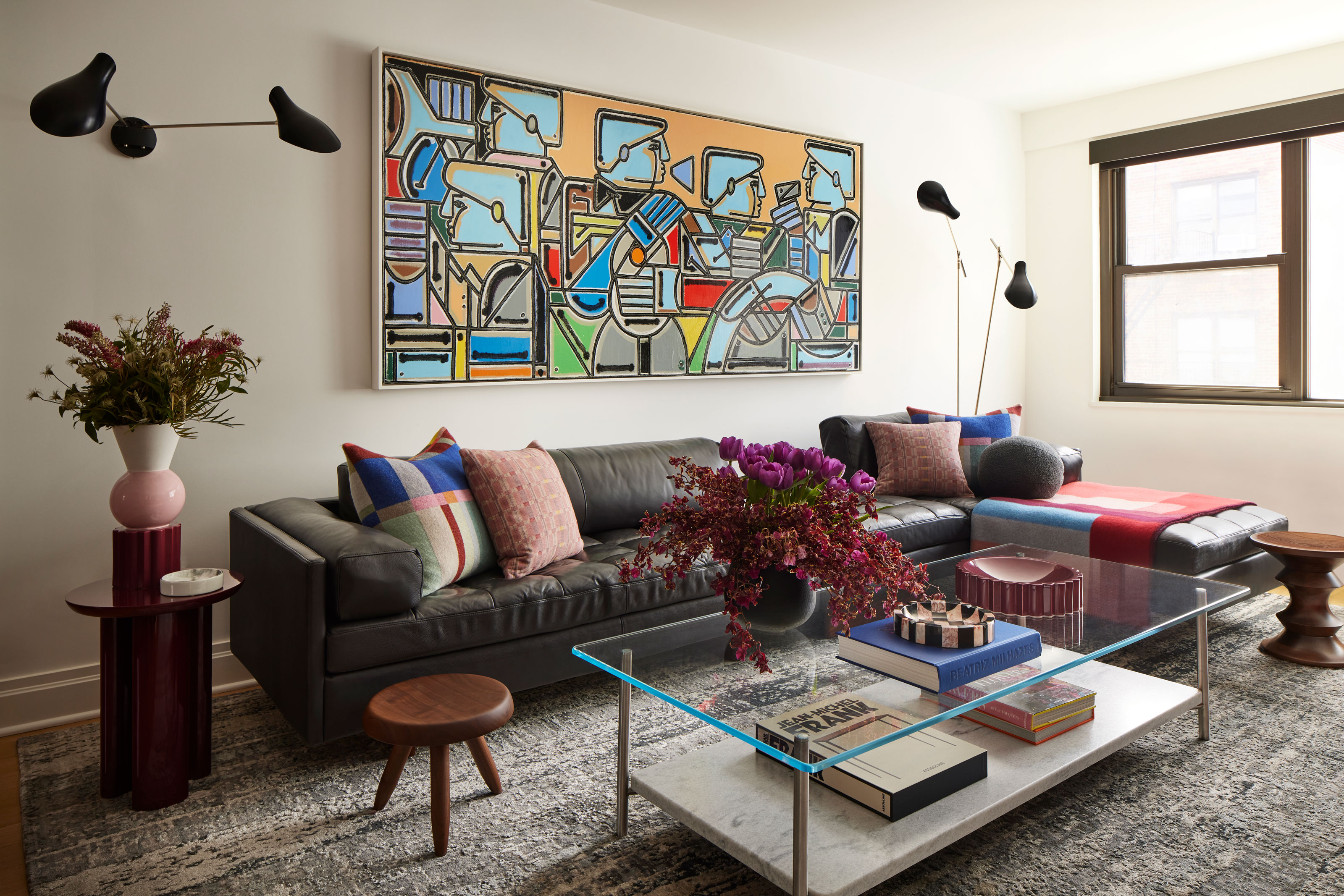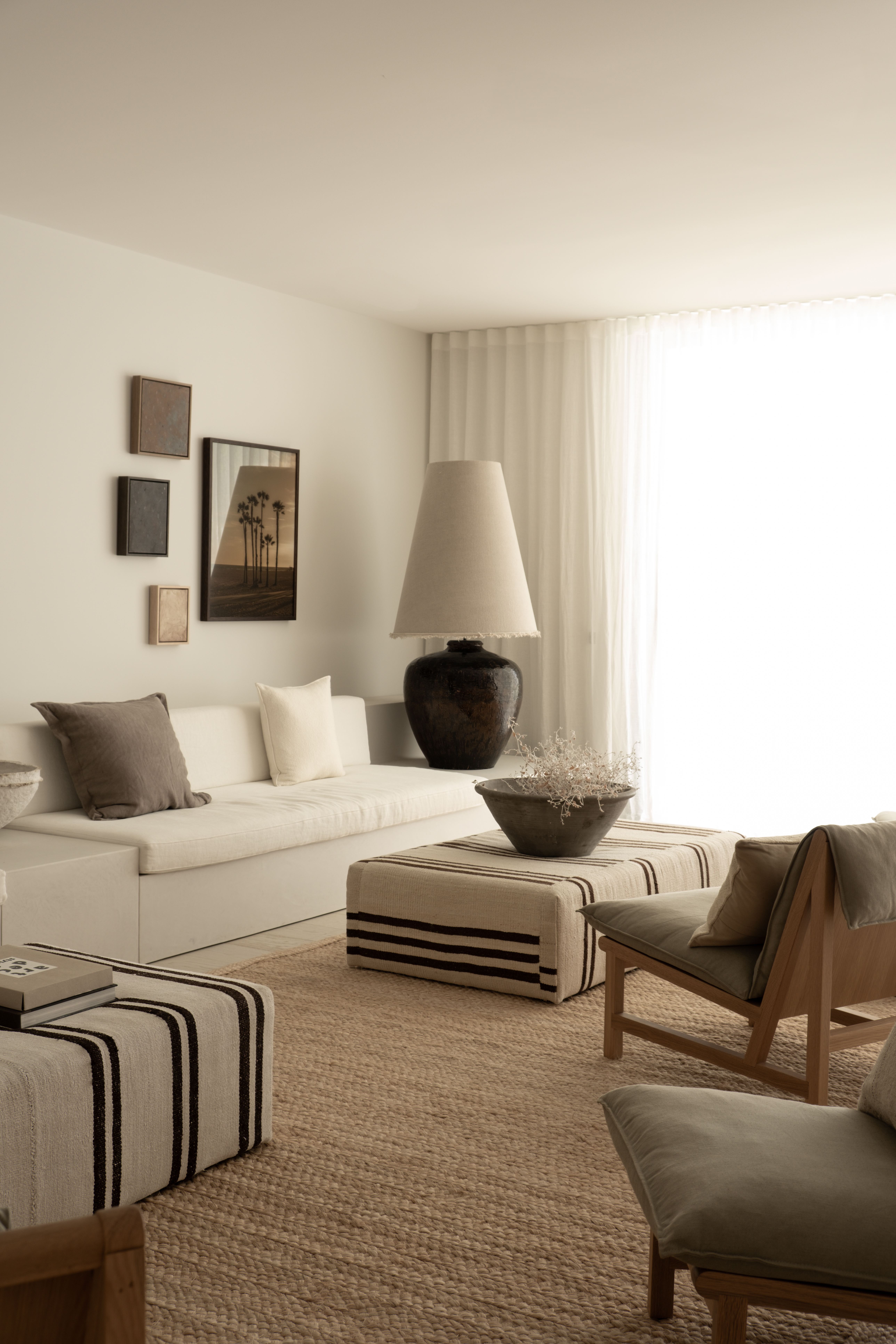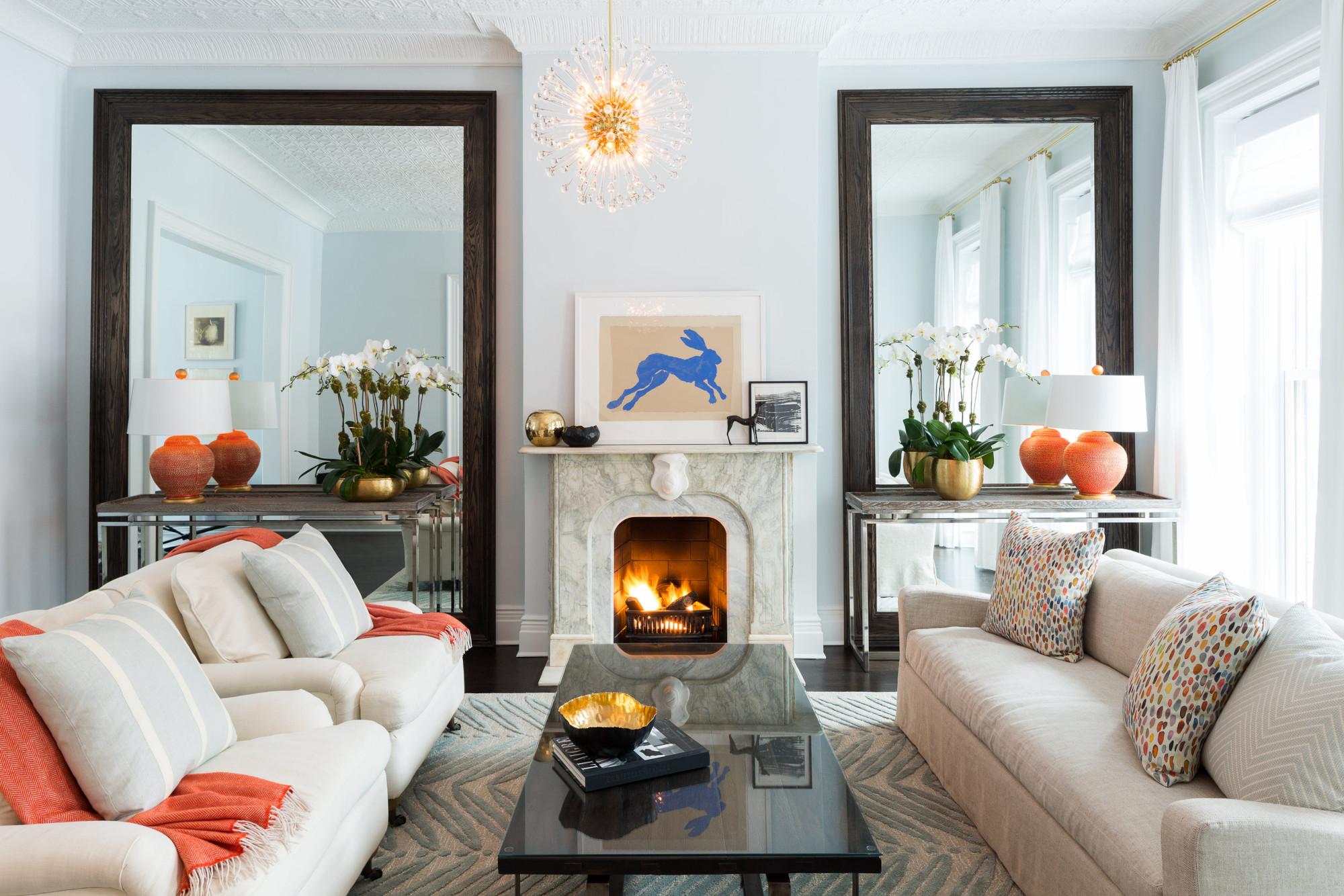Forget the Ceiling Light — These Are the 5 Ways You Should Be Lighting Your Living Room
Going more in on alternatives forms of lighting for your living room will create a better ambiance than the 'big light'


If your living room happens to lack ceiling lights, don’t assume that you’ll have to succumb to spending time in a dark, unwelcoming space.
In fact, many people are now turning their backs on the "big light" in favor of other living room lighting ideas that bring a cozier ambiance, foregoing them in these rooms all together.
The secret to making it work? Prioritizing a mix of ambient, task, and accent lighting, weaving together many different layers to appropriately brighten up your living space, designers say.
Below are a few of their favorite specific types of solutions for rooms without ceiling lights.
1. Decorate with floor and table lamps

Perhaps the most obvious solution, floor and table lamps are versatile in style and size. “Positioning a floor lamp next to seating or in corners can offer ambient light, while table lamps with shades can provide a softer glow, ideal for a relaxing evening atmosphere,” says Erica McLain, the founder of McLain by Design Interiors.
You will want to select pieces that complement your living room’s design style, but otherwise, you’ll have tons of flexibility as you shop. The right lighting has the power to double as art, adding instant intrigue to any room.
Keep in mind that there are many cordless, portable table lamps that you can move around from one surface to another, too.
The Livingetc newsletters are your inside source for what’s shaping interiors now - and what’s next. Discover trend forecasts, smart style ideas, and curated shopping inspiration that brings design to life. Subscribe today and stay ahead of the curve.
2. Hang art lights

To supplement other fixtures in your living room, consider installing art lights as well where wall space allows, says Seth Ballard, owner of Ballard & Mensua Architecture. “Dedicated art lights that arc over paintings is a nice way to provide perimeter lighting for a warm and inviting feeling in a more formal living room,” he explains.
You can combine art lights with individual artworks to offer spotlight accent lighting on a single piece, or combine more broadly with a gallery wall for interesting accent lighting.
3. Add sconces


Sconces are another great way to utilize wall space while brightening up your living room. “This is so easy to do today with sconce options like hardwired, plug-in, and battery-powered beauties,” says Tiffany Matthews, the founder of Motif Homes. The array of pieces on the market means that even if you’re a renter, you can still weave a sconce into your space without having to redo any electrical wiring.
The way in which you position your scone will vary its effect. “Wall sconces can frame an entrance, be placed between mirrors or artwork, and add rhythm to a large room when used in repetition,” explains Carlos Nyce an interior designer with TriVistaUSA. “When facing upward, sconces can contribute to ambient lighting by reflecting light off the ceiling; when facing downward, they add coziness to the room’s lighting.”
The best examples of wall sconces can double up as living room wall decor, too, used in combination with artworks to add interest to your walls.
4. Install lighting LED strips

Make use of LED lighting ideas where you can, McLain suggests. “Installing LED strips behind shelves, under couches, or along architectural features like coves can create subtle background lighting,” she explains. “This technique not only highlights design elements but also adds an atmospheric touch without requiring ceiling installations.”
This could be incorporated into shelving, crown molding, or even into the architecture. In this Toronto home by Studio AC, LED lighting strips run across the top of the walls, washing the wood-clad pitched roof in light.
5. Incorporate reflective surfaces

Light fixtures aren’t the only way to make a space appear brighter. “Incorporating reflective surfaces, such as living room mirrors and glossy finishes, help to bounce light around the room, and enhance brightness; all working together to create a well-balanced lighting scheme,” explains Rebecca Bobroff, the founder of Rebecca Bobroff Design.
So go ahead and display an oversized selfie mirror in the corner of your living room or add a smaller one to your gallery wall — it will pay off!

Sarah Lyon is a freelance writer living in New York City. She primarily covers lifestyle and interior design pieces for top print and online publications. In addition to writing for LivingEtc, Sarah contributes to Arch Digest, Good Housekeeping, House Beautiful, Southern Living, and more. Sarah is also an avid home decorator and offers styling services for interior designers, too. Her own home tours have been featured on websites including Washingtonian.com, The Everygirl, Apartment Therapy, and in Architectural Digest's online DIY section. Sarah has a bachelor of arts degree from Colby College and a master's from the University of Pennsylvania.


